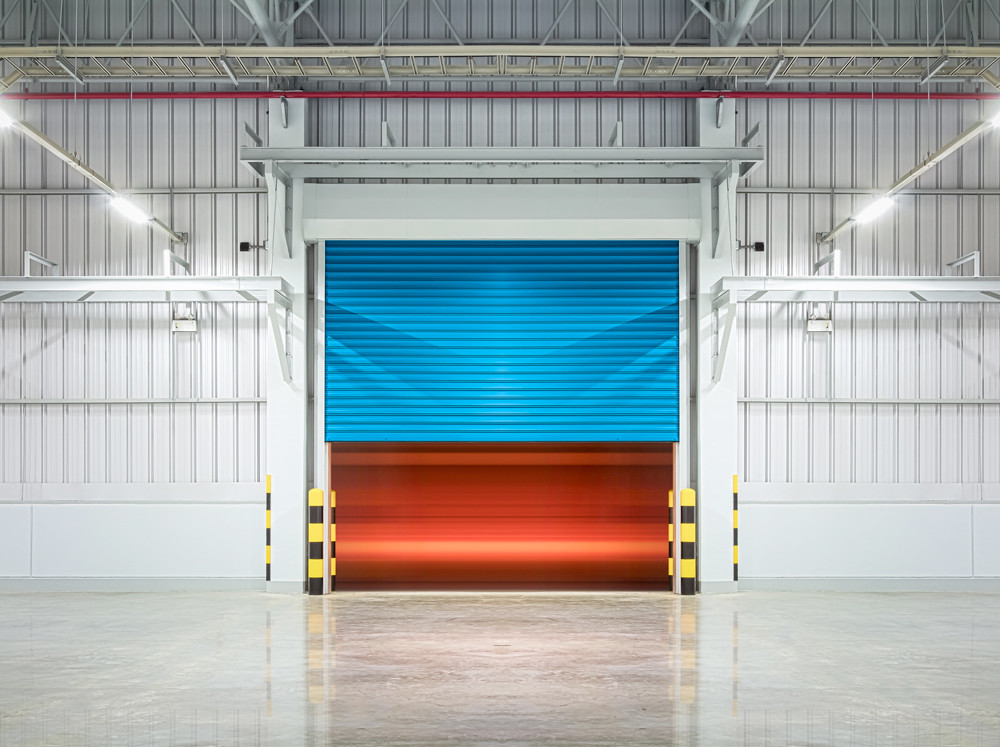Everyone knows them, the heaters installed at the entrance to shops or department stores, which use a dense cloud of warm air to shield the inside of the building from the cold or heat outside. But such devices are also becoming increasingly common in other areas such as production or transport and logistics.
However, compared to the often large-volume devices that blow meter-thick heat clouds out of wide air shafts, these systems create fine air walls from significantly narrower nozzles. The air is released with greater pressure, which creates an invisible air wall. While conventional air curtains are designed to circulate high volumes of air (between 4,000 - 5,000 m³/hour), air wall technology works with only 800 - 1,000 m³/hour. The air flow speed is between 15 and 30 m/s (compared to 8 to 12 m/s). And it is precisely this thin jet of air that is sufficient to ensure separation of the air masses.
A major advantage of this solution is the reduction in energy costs associated with the smaller dimensions. Consumption is up to 40 percent lower than that of a conventional system.
Air wall technology in intralogistics
The operation of storage facilities is characterized by constant turnover of goods and intensive use of the hall doors. Long gate opening times lead to the warehouse cooling down or warming up, with negative consequences for stored goods, quality and working conditions. Gates equipped with air wall technology (gates made of air) help to prevent this effect. Barrier-free isolation therefore also has a number of advantages in logistics:
Heatability
The hall doors, which are open due to the constant flow of goods, allow the interior of the warehouse to cool down despite the heating being on. In addition to the immense energy consumption for the electricity-guzzling heating, this reduces the quality of the working conditions. In addition, temperature fluctuations limit storage options for sensitive products. With the use of air wall technology, the gates remain permanently passable, but the exchange of air masses is massively reduced. Constant temperatures in the warehouse can now be achieved more efficiently and cost-effectively.
Cooling costs
The same applies to cooling in the warehouse. When the doors to the cooling chambers are opened, warm air flows in, which means that the chambers have to be cooled again to the required temperature. This air mass exchange is effectively prevented by air gates, thus reducing cooling costs.
Climate zones
Since many products require different temperatures, humidity, oxygen content, etc. for optimal storage, several climate zones are often integrated into a warehouse. However, the spatial separation required for this by walls and doors restricts access. In many cases, this separation can be achieved barrier-free with gates made of air. In addition, when the connecting gates are opened, the risk of the climatic zones mixing, which would impair product quality, is prevented. In combination with separate air purification systems, the effectiveness can also be increased.
Reduce waiting times
The inefficient heating could be prevented by closed gates, but this creates further problems. Opening closed gates causes traffic jams for goods transport waiting in front of them, which increases waiting times and therefore costs - not to mention the lack of space in front of the gates caused by the traffic jam. However, gates made of air can be passed through unhindered at any time.
Promote health
Optimal working conditions are a key requirement for healthy and productive employees. In return, absences due to illness lead to a loss of productivity. Illnesses are often caused by the temperature fluctuations in the camp and the associated cold drafts from the open gates. With the installation of air gates, this can be avoided, leading to a reduction in illness-related costs.
Accident prevention
Since closed gates are usually only opened shortly before the passage, these passages represent a potential source of danger for employees. If the gate opens too late or closes too early, accidents can easily occur. Such dangers do not arise with barrier-free air wall doors. The same applies to vehicles, which are protected from damage caused by collisions with gate elements.
Fire and smoke insulation
In the event of a building fire, it is particularly important to keep escape and rescue routes smoke-free for as long as possible. Therefore, in the event of a fire, escape routes such as stairwells and hallways are provided with increased air pressure. However, as soon as the doors of the escape routes are used, the excess pressure generated escapes and the risk of toxic smoke gases entering increases. Air wall gates specially developed for this purpose seal off escape doors and maintain excess pressure even when the doors are open. This means that the escape and rescue routes remain smoke-free for a long time and can be used unhindered.
Prevent emissions
Dust or odor emissions caused by products, from which other areas of the company and surrounding businesses or residents need to be protected, can be prevented using air wall technology. With conventional systems, they would enter the environment unhindered when the gates were opened.
Insect damage
In sectors such as the food industry, flying insects endanger product quality and can cause serious damage, especially when storing the items.
When the gates are open, insects can easily enter the storage rooms, whereas air gates prevent insects from entering due to their sealing effect. A number of German providers such as LWT and ML-Technologies specialized in this technology. It remains to be seen whether and how this innovative solution will become established in intralogistics.


